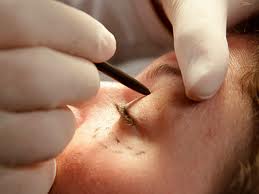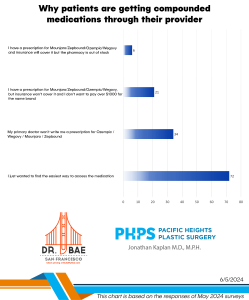 Blepharoplasty (eyelid surgery) is one of the most popular facial plastic surgeries there are—a fact that has made it a relatively routine, and therefore safe, procedure. As with all surgeries, however, some risk is involved with eyelid surgery, and it’s important to be informed about what they are if you’re considering the procedure for yourself.
Blepharoplasty (eyelid surgery) is one of the most popular facial plastic surgeries there are—a fact that has made it a relatively routine, and therefore safe, procedure. As with all surgeries, however, some risk is involved with eyelid surgery, and it’s important to be informed about what they are if you’re considering the procedure for yourself.
Here are some of the most frequently seen complications from blepharoplasty (although only a very small percentage of patients will experience them):
Hematoma. A hematoma is a collection of blood that can accumulate under the skin. This can occur in the area surrounding the eye after blepharoplasty, though the risk percentage is placed at only about 1%. A hematoma can be removed by your plastic surgeon (by draining it with a needle or through a small incision), and most patients recover well, without any further complications.
Dry-Eye Syndrome. Blepharoplasty can sometimes cause severe dry-eye pain in patients, especially if they already suffer from dry-eye syndrome prior to the surgery (these patients will often experience a much longer period discomfort than those who had no prior problems with dry eyes). Dry-eye syndrome can usually be treated by using artificial tears to keep the eyes lubricated, but if the pain is severe or persistent, you should consult your surgeon and your opthamologist.
Infection. It’s extremely rare to develop an infection after blepharoplasty—it occurs in only .2% to .9% of patients—but it is possible. If you develop redness, swelling, and pain following surgery, call your surgeon; in most cases, a simple course of antibiotics will take care of the infection.
Lid malposition. The most common form of lid malposition that can occur following blepharoplasty is ectropion—a looseness of the lower lid margin. Sometimes, this pulling-away of the lid is temporary, and improves on its own as the puffiness caused by the procedure begins to disappear. If the ectropion does not resolve itself, however, another surgical procedure may be necessary to tighten the lid and restore it to its original position.
As I said before, these are the complications that have been known to occur as a result of blepharoplasty, but they’re still unlikely–and this is especially true if you go to a skilled, board-certified plastic surgeon. But it’s important to know about these minor complications ahead of time; having a minor complication treated right away is the best way to avoid it turning into a more serious complication further down the road!




